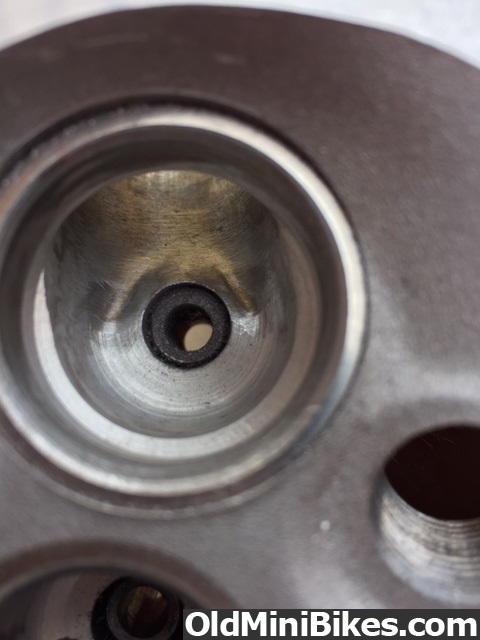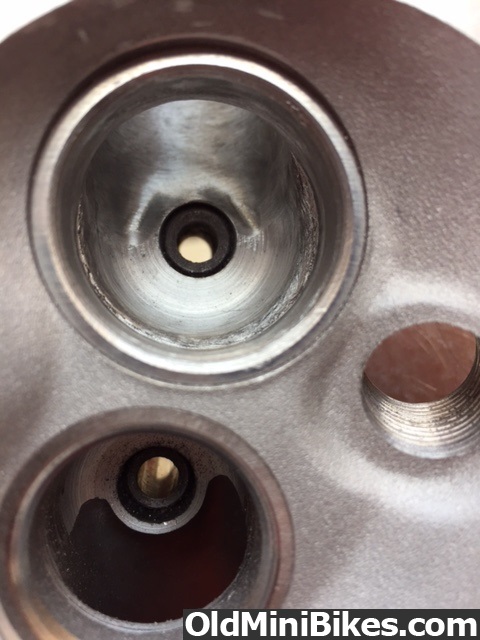I have a UT2 head I am working on with the valve seats for the 26mm intake and 24mm exhaust. I am going to order a 27mm intake tomorrow but am unsure how deep to have the seat honed out. I know to hone the whole seat larger but how far in to the bowl do I go? I know to machine the whole valve seat larger but after that I am unsure. I don't want to go too far as I don't want to mess up the shape of the valve pocket and mess up flow. I was thinking about 2/3 of the way down from the top of the valve seat so I can blend it in. How far down do I have the machine shop hone? Or do I just machine the valve seat and blend the bowl below the seat?
I also had a question on the valves... I bought a nice stainless exhaust valve and am ordering my intake tomorrow and see that there is only 1 angle on the valve. Is this how there installed or dose it need machined? I know I need to lap the valve, that's not what I am asking. I was thinking of lapping the valve so I could see were is sits on the seat and having a machine shop cut the valve for better flow, at least on the back side. I will talk to the machine shop I get the seat cut at about my set up too and also ask them these questions but what is your opinions guys? Should the valve have a 3 angle valve job like a car would? Its a small valve and I am guessing no but want to make sure.
I ported the head today lightly. Turned out pretty good. I am guessing I will have to re do some of the intake after the valve seat is enlarged. I was planning on using a dremel with a flex shaft attachment but found doing it by hand with emery cloth glued to different things worked better. I just blended everything between the ports and bowls and lightly made a transition on the port floor as it had a sharp edge and is flat as a board. Not sure the work will show up on a picture but will get some up in a day or 2. This is my first head to port and it looks nice. The wife has the phone so pictures will be late tomorrow.
I also had a question on the valves... I bought a nice stainless exhaust valve and am ordering my intake tomorrow and see that there is only 1 angle on the valve. Is this how there installed or dose it need machined? I know I need to lap the valve, that's not what I am asking. I was thinking of lapping the valve so I could see were is sits on the seat and having a machine shop cut the valve for better flow, at least on the back side. I will talk to the machine shop I get the seat cut at about my set up too and also ask them these questions but what is your opinions guys? Should the valve have a 3 angle valve job like a car would? Its a small valve and I am guessing no but want to make sure.
I ported the head today lightly. Turned out pretty good. I am guessing I will have to re do some of the intake after the valve seat is enlarged. I was planning on using a dremel with a flex shaft attachment but found doing it by hand with emery cloth glued to different things worked better. I just blended everything between the ports and bowls and lightly made a transition on the port floor as it had a sharp edge and is flat as a board. Not sure the work will show up on a picture but will get some up in a day or 2. This is my first head to port and it looks nice. The wife has the phone so pictures will be late tomorrow.






